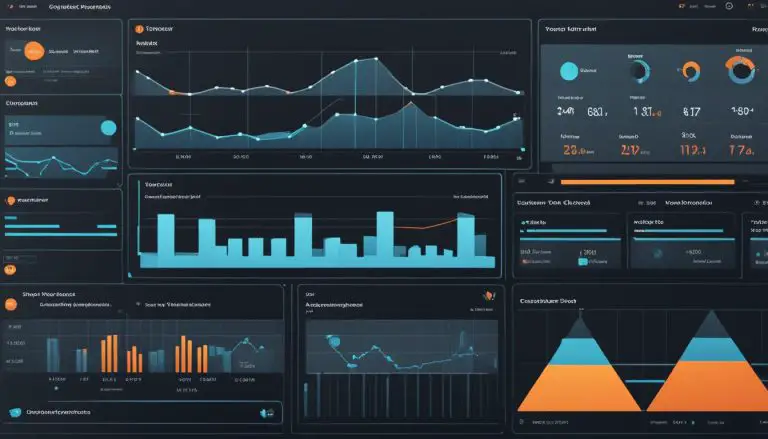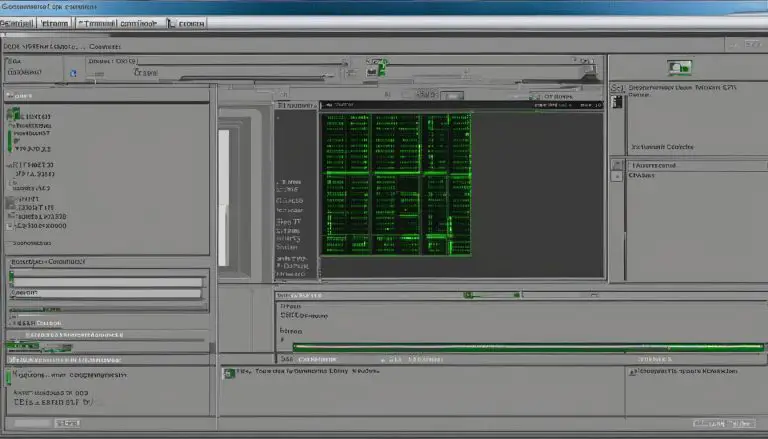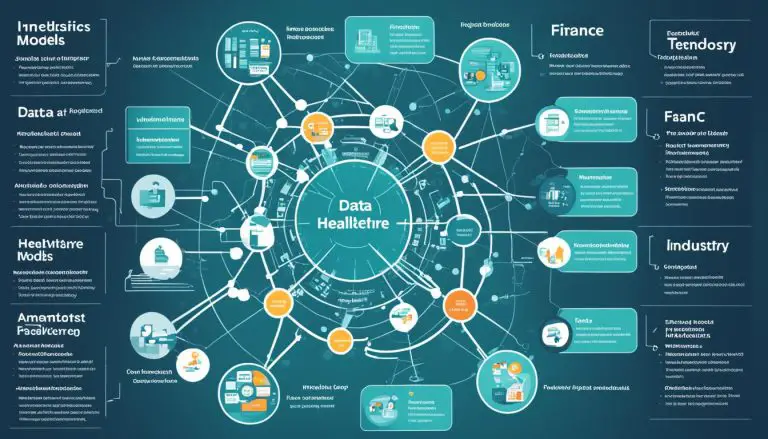What is Rocky Linux Explained
Rocky Linux is an open-source Linux distribution developed by the Rocky Enterprise Software Foundation. It is designed to be a downstream release that is fully compatible with the Red Hat Enterprise Linux (RHEL) operating system source code. The goal of Rocky Linux is to provide a community-supported, production-grade enterprise operating system. It was created as an alternative for users who relied on CentOS, which was discontinued by Red Hat. Rocky Linux offers stability, reliability, and compatibility with RHEL, making it a popular choice for server operating systems.
Key Takeaways:
- Rocky Linux is an open-source Linux distribution developed by the Rocky Enterprise Software Foundation.
- It is designed to be fully compatible with the Red Hat Enterprise Linux (RHEL) operating system source code.
- Rocky Linux provides a community-supported, production-grade enterprise operating system.
- It offers stability, reliability, and compatibility with RHEL, making it a popular choice for server operating systems.
- Rocky Linux was created as an alternative for users who relied on CentOS, which was discontinued by Red Hat.
Rocky Linux Features
Rocky Linux offers several key features that make it a robust operating system. It is built on the stable source code of RHEL, ensuring reliability and compatibility with RHEL-based applications. Rocky Linux follows a point-release system, providing regular updates for enhanced security and performance. It also has a strong community of developers and users who contribute to its development and provide support.
One of the standout features of Rocky Linux is its free and open-source nature. Users can download, use, and customize it without any licensing fees. This makes it a cost-effective choice for both individuals and businesses. Additionally, each release of Rocky Linux comes with a long lifecycle, with support lasting ten years. This ensures that users can rely on the operating system for a considerable period without the need for frequent upgrades.
Another advantage of Rocky Linux is its migration capabilities. It provides easy migration paths for users transitioning from CentOS and other Linux distributions. This makes it a seamless choice for those seeking an alternative to CentOS following its discontinuation. With its stability, compatibility, and strong community support, Rocky Linux is a versatile operating system suitable for a wide range of use cases.
Table: Rocky Linux Key Features
| Feature | Description |
|---|---|
| Compatibility | Built on stable RHEL source code for application compatibility |
| Point-Release System | Regular updates for enhanced security and performance |
| Community Support | Active community of developers and users contributing to development and support |
| Free and Open Source | No licensing fees, allowing for cost-effective use and customization |
| Long Lifecycle | Support for each release lasting ten years |
| Migration Paths | Easy migration from CentOS and other Linux distributions |
With its impressive feature set, Rocky Linux has become a popular choice for individuals and businesses seeking a reliable and versatile operating system. Whether you are looking for compatibility, regular updates, or a strong support community, Rocky Linux has you covered.
Benefits of Rocky Linux
Rocky Linux offers numerous benefits that make it a compelling choice for users seeking a reliable and robust operating system. Firstly, as an open-source distribution, Rocky Linux is completely free to download, use, and customize, eliminating any licensing fees or restrictions. This makes it a cost-effective solution for individuals and businesses looking to optimize their budget without compromising on performance.
Additionally, Rocky Linux is built on the stable source code of Red Hat Enterprise Linux (RHEL), ensuring its stability, reliability, and compatibility with RHEL-based applications. This allows users to seamlessly transition to Rocky Linux without any disruptions, as it provides a familiar environment and supports existing software infrastructure.
Furthermore, Rocky Linux offers long-term support for each release, with a lifecycle of ten years. This means that users can rely on the operating system to receive regular updates and security patches, ensuring their system remains secure and up-to-date. The extended support also provides peace of mind for businesses that require a stable and reliable platform for their critical operations.
Lastly, one of the key advantages of Rocky Linux is its strong community of users and developers. The community actively contributes to the development and improvement of the operating system, providing support, documentation, and valuable insights. This vibrant community ensures that users have access to the necessary resources and assistance to optimize their Rocky Linux experience.
Rocky Linux vs CentOS
Rocky Linux and CentOS are two popular Linux distributions that aim to provide stable and fully compatible alternatives to the Red Hat Enterprise Linux (RHEL) operating system. While both distributions share a similar goal, there are some key differences between them that make Rocky Linux a compelling choice as a replacement for CentOS.
Community-Driven vs Upstream Development
One of the main differences between Rocky Linux and CentOS is the development approach. Rocky Linux is a community-driven project led by Gregory Kurtzer, the original founder of CentOS. It is backed by various large sponsors such as Amazon, Microsoft, and Google. On the other hand, CentOS Stream is an upstream development variant of RHEL and is more focused on continuous updates for developers.
Rocky Linux follows a point-release system, providing regular updates for enhanced security and performance. It aims to offer a stable and production-grade operating system that is fully compatible with RHEL. CentOS Stream, on the other hand, focuses on providing the latest features and innovations for developers, making it a better fit for those who require bleeding-edge technologies.
Stability and Long-Term Support
Rocky Linux and CentOS both offer stability and long-term support. However, Rocky Linux emphasizes long-term support by providing a ten-year lifecycle for each release. This ensures that users can rely on Rocky Linux for years without the need for frequent upgrades or migrations.
Additionally, Rocky Linux benefits from a strong community of developers and users who actively contribute to its development and provide support. This community-driven approach ensures ongoing updates, bug fixes, and security patches, making Rocky Linux a reliable choice for production environments.
A Replacement for CentOS
With the discontinuation of CentOS by Red Hat, many users were left searching for an alternative. Rocky Linux emerged as a direct replacement for the traditional CentOS release, offering stability, compatibility, and long-term support.
Rocky Linux provides an easy migration path for users transitioning from CentOS, as it is built on the same source code as RHEL. This allows users to seamlessly transition their existing CentOS installations to Rocky Linux without major disruptions or compatibility issues.
In summary, Rocky Linux is a community-driven, stable, and fully compatible alternative to CentOS. It offers long-term support, regular updates, and a strong community of users and developers. Whether you need an enterprise-grade operating system or a reliable server platform, Rocky Linux is a viable choice as a CentOS replacement.
| Rocky Linux | CentOS |
|---|---|
| Community-driven project | Upstream development |
| Point-release system | Continuous updates for developers |
| Ten-year lifecycle for each release | Long-term support |
| Easy migration path from CentOS | Compatibility with RHEL |
| Strong community support | Community-driven development |
Rocky Linux Release Date
The highly anticipated release of Rocky Linux, the community-supported enterprise operating system, took place on June 21, 2021. This date marked the general availability of the stable version of Rocky Linux, following the earlier release of the first release candidate version on April 30, 2021. Since then, the development team has been working diligently to provide regular updates and new versions to enhance the performance and security of the operating system.
Rocky Linux 9.0, the latest stable release, was introduced in July 2022, offering users an updated and feature-rich experience. As with previous versions, this release will be supported for a period of ten years, ensuring long-term stability and reliability for enterprise users.
Table:
| Rocky Linux Version | Release Date |
|---|---|
| Rocky Linux 8.4 | June 21, 2021 |
| Rocky Linux 9.0 | July 2022 |
The release of Rocky Linux has been met with enthusiasm from the open-source community, as it provides a stable and fully compatible alternative to CentOS. Users can now take advantage of the familiar environment and extensive ecosystem of software and applications that Rocky Linux offers. The commitment to regular updates and long-term support ensures that Rocky Linux will continue to evolve and meet the needs of enterprise users in the years to come.
Rocky Linux Installation Guide
Installing Rocky Linux is a straightforward process that can be done using a bootable USB or DVD. Follow the step-by-step guide below to install Rocky Linux on your system:
- Download the ISO file from the official Rocky Linux website.
- Burn the ISO file to a USB or DVD to create bootable media.
- Boot your system using the bootable media and follow the on-screen prompts to start the installation.
- Choose your preferred language and select the installation source.
- Configure the installation destination by specifying the disk or partition where you want to install Rocky Linux.
- Customize the software selection based on your needs. You can choose from various options, such as desktop environments, development tools, and server components.
- Set up a root password to secure your system.
- Create a user account with appropriate privileges.
- Review the installation summary and make any necessary changes.
- Once you are satisfied with the configuration, click on the Install button to begin the installation process.
- Wait for the installation to complete. The time required may vary depending on your system’s hardware.
- After the installation is finished, reboot your system and remove the bootable media.
- You can now log in to your newly installed Rocky Linux system and start using it.
By following these steps, you will have Rocky Linux up and running on your system, ready to be customized and utilized for your specific needs.
“Installing Rocky Linux is a breeze with its user-friendly installation process. Whether you are a beginner or an experienced user, you can easily set up Rocky Linux on your system without any hassle. Simply download the ISO file, create bootable media, and follow the on-screen prompts. With its stability, reliability, and compatibility with Red Hat Enterprise Linux, Rocky Linux is a great choice for server operating systems.”
Remember to refer to the official Rocky Linux documentation for more detailed instructions and troubleshooting tips. The documentation provides comprehensive guidance on various aspects of Rocky Linux, ensuring you have the necessary resources to make the most out of this powerful operating system.
Rocky Linux Documentation
One of the key strengths of Rocky Linux is its comprehensive documentation, which serves as a valuable resource for users of all skill levels. The Rocky Linux documentation covers a wide range of topics, including installation, configuration, administration, and troubleshooting. Whether you are a beginner looking to get started with Rocky Linux or an experienced user seeking advanced guidance, the documentation provides step-by-step instructions, command references, and troubleshooting tips to help you make the most of this enterprise-grade operating system.
The documentation is regularly updated to reflect the latest releases and features of Rocky Linux, ensuring that you have access to accurate and up-to-date information. This is particularly important in the rapidly evolving world of technology, where new updates and security patches are frequently released. By referring to the official Rocky Linux documentation, you can stay informed about the latest best practices and ensure the smooth operation of your system.
One notable aspect of the Rocky Linux documentation is its user-friendly format. The content is organized logically, making it easy to navigate and find the information you need. The documentation is also supplemented with examples, diagrams, and code snippets to enhance understanding and provide practical guidance. Whether you prefer to skim through the content or dive deep into specific topics, the documentation caters to various learning styles and preferences.
| Benefits of Rocky Linux Documentation | Rocky Linux Documentation Features |
|---|---|
|
|
Whether you are looking to install Rocky Linux, configure specific services, or troubleshoot issues, the Rocky Linux documentation is a valuable companion in your journey. It provides the knowledge and guidance you need to leverage the full potential of this enterprise-grade operating system and ensure the smooth and efficient operation of your systems.

Benefits of Rocky Linux for Enterprises
- Stability and reliability: Rocky Linux is built on the stable RHEL source code, providing a dependable and secure operating system.
- Compatibility with RHEL: Rocky Linux is fully compatible with RHEL, allowing for seamless migration and compatibility with RHEL-based applications.
- Long-term support: Each release of Rocky Linux is supported for ten years, ensuring businesses have a stable and supported operating system.
- Advanced security features: Rocky Linux includes advanced security features to protect enterprise systems and data.
- Scalability: Rocky Linux can scale to handle the demands of large-scale enterprise deployments.
Rocky Linux offers stability, reliability, and compatibility, making it a trusted choice for businesses.
Comparison with Other Enterprise Operating Systems
| Operating System | Stability | Compatibility | Long-term Support | Security Features | Scalability |
|---|---|---|---|---|---|
| Rocky Linux | High | High | 10 years | Advanced | High |
| CentOS Stream | Medium | High | Unknown | Basic | Medium |
| Ubuntu | Medium | Medium | 5 years | Advanced | High |
Table: Comparison of stability, compatibility, long-term support, security features, and scalability of Rocky Linux with other enterprise operating systems.
Sponsors of Rocky Linux
Rocky Linux, as a community-driven Linux distribution, is supported by various prominent sponsors who provide financial support and resources to ensure the continued development and maintenance of the operating system. The sponsors of Rocky Linux include industry giants such as Amazon Web Services (AWS), Microsoft, and Google Cloud. These sponsors play a crucial role in the sustainability and growth of Rocky Linux, contributing to its infrastructure, server resources, and community initiatives.
The sponsorship from these major industry players demonstrates their confidence in the project and their commitment to providing a stable and reliable alternative to CentOS. It also highlights the importance of Rocky Linux in the enterprise and open-source communities. With the support of these sponsors, Rocky Linux can continue to evolve and thrive as a trusted Linux distribution.
Furthermore, the sponsorship enables Rocky Linux to provide ongoing support and development, ensuring that users have access to a robust and feature-rich operating system. The contributions from sponsors help to maintain the long-term support and regular updates for each release, keeping Rocky Linux up-to-date with the latest security patches and performance enhancements. This ensures that businesses and individuals relying on Rocky Linux can have confidence in its stability, reliability, and compatibility with RHEL.
The Future of Rocky Linux
Rocky Linux has quickly gained momentum since its initial release and shows great promise for the future. With a growing community of users and developers, as well as ongoing support from major industry sponsors, Rocky Linux is poised to become a trusted and widely adopted Linux distribution.
One of the key factors driving the future success of Rocky Linux is its focus on stability and compatibility. Being based on the stable source code of RHEL ensures that Rocky Linux is reliable and provides a high level of compatibility with RHEL-based applications. This makes it an attractive option for businesses and individuals who require a solid and consistent operating system for their servers.
Furthermore, the strong community support behind Rocky Linux plays a crucial role in its development and growth. The community contributes to the ongoing improvement of the distribution, providing feedback, bug reports, and new features. This collaborative effort ensures that Rocky Linux remains up-to-date, secure, and well-suited to meet the needs of its users.
Table: Key Factors for the Future Success of Rocky Linux
| Factor | Description |
|---|---|
| Stability and Compatibility | Rocky Linux is built on the stable RHEL source code, ensuring a reliable and compatible operating system. |
| Strong Community Support | The active and dedicated community provides ongoing development, support, and feedback for Rocky Linux. |
| Industry Sponsorship | Support from major industry players, such as Amazon, Microsoft, and Google, demonstrates the confidence and commitment to Rocky Linux’s success. |
As the demand for CentOS alternatives continues to grow, Rocky Linux is positioned to fill this void with its enterprise-grade features and long-term support. Its commitment to the open-source community, combined with its compatibility with RHEL, makes it a natural choice for organizations seeking a stable and reliable operating system.
In conclusion, the future of Rocky Linux looks bright. With its strong foundation, growing community, and ongoing support from industry sponsors, Rocky Linux is set to establish itself as a leading Linux distribution for both enterprise and open-source environments.
Conclusion
In conclusion, Rocky Linux is a powerful enterprise-grade Linux distribution that serves as a reliable replacement for CentOS. With its stability, compatibility, and regular updates, it meets the needs of businesses and individuals looking for a robust server operating system. Whether you are a former CentOS user or new to RHEL-based distributions, Rocky Linux provides a cost-effective solution with strong community support.
The future of Rocky Linux looks promising, with a growing community of users and developers and ongoing support from major sponsors such as Amazon Web Services, Microsoft, and Google Cloud. The dedication of the Rocky Enterprise Software Foundation ensures that the project will continue to be developed and maintained for years to come.
With its focus on stability, compatibility, and community support, Rocky Linux is well-positioned for future growth and adoption in both the enterprise and open-source communities. Whether you’re running servers, cloud environments, or high-performance computing systems, Rocky Linux offers the reliability and security you need.
FAQ
What is Rocky Linux?
Rocky Linux is an open-source Linux distribution developed by the Rocky Enterprise Software Foundation. It is designed to be a downstream release that is fully compatible with the Red Hat Enterprise Linux (RHEL) operating system source code.
What are the key features of Rocky Linux?
Rocky Linux offers stability, reliability, and compatibility with RHEL. It follows a point-release system, provides regular updates for enhanced security and performance, and has a strong community of developers and users who contribute to its development and support.
What are the benefits of using Rocky Linux?
Rocky Linux is free to use, provides stability and reliability, offers long-term support, and has a strong community for support and development.
How does Rocky Linux compare to CentOS?
Rocky Linux is seen as a replacement for CentOS and aims to provide a stable and fully compatible alternative to RHEL. It is a community-driven project led by the founder of CentOS, Gregory Kurtzer, and follows a point-release system.
When was Rocky Linux released?
The first release candidate version of Rocky Linux was made available on April 30, 2021, and the general availability version was released on June 21, 2021.
How do I install Rocky Linux?
To install Rocky Linux, download the ISO file from the official website, create bootable media, and follow the on-screen prompts during the installation process.
Where can I find documentation for Rocky Linux?
Comprehensive documentation for Rocky Linux is available on the official Rocky Linux website. It covers various topics related to installation, configuration, administration, and troubleshooting.
What is the history of Rocky Linux?
Rocky Linux was founded in 2021 by Gregory Kurtzer, one of the co-founders of CentOS, in response to Red Hat’s decision to discontinue CentOS. The project aims to provide a stable, community-driven alternative compatible with RHEL.
Is Rocky Linux suitable for enterprise use?
Yes, Rocky Linux is an enterprise-grade operating system suitable for various enterprise use cases. It provides stability, reliability, and compatibility with RHEL.
Who are the sponsors of Rocky Linux?
Rocky Linux is supported by prominent sponsors such as Amazon Web Services (AWS), Microsoft, and Google Cloud, who provide financial support and resources for its development and maintenance.
What is the future of Rocky Linux?
The future of Rocky Linux looks promising, with a growing community of users and developers, ongoing support from sponsors, and the dedication of the Rocky Enterprise Software Foundation.
- About the Author
- Latest Posts
Matthias Böhmichen is the founder of howto-do.it . He is using Linux since 1991 and fell in love with windows a few years later. He likes to discover new technologies, especially hard- and software.






